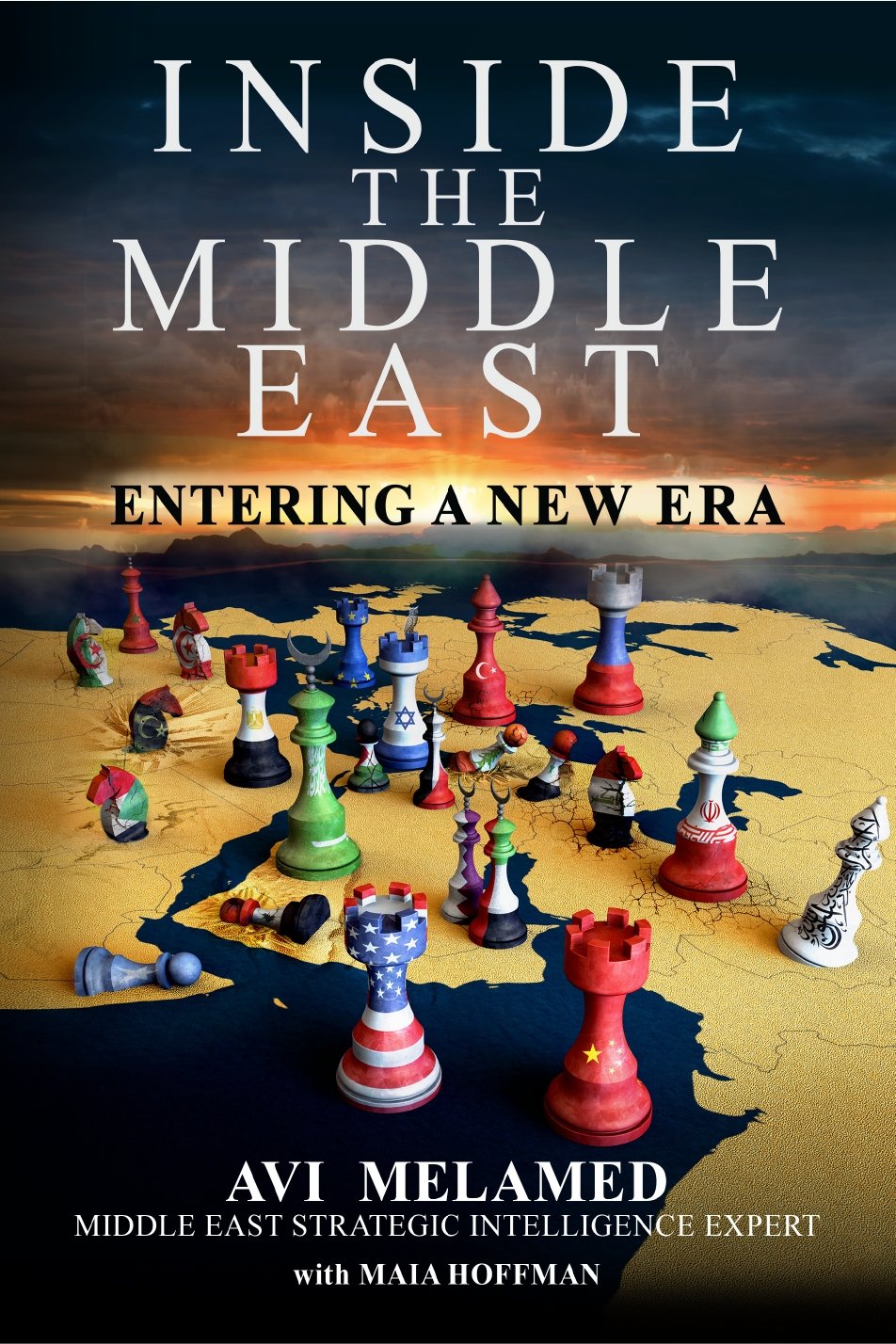|
Getting your Trinity Audio player ready...
|
Sunni Shi’ite Power Struggle
Two major historic struggles have played a central role in shaping the Muslim world and the Middle East.
One axis is the struggle between Sunnis and Shi’ites in Islam. The other axis is the rivalry between two large regional civilizations: The Arab civilization and the Persian civilization.
There are about 1.6 billion Muslims in the world. About ninety-percent are Sunni. A minority of them, about ten percent, are Shi’ite.
Abū al-Qāsim Muḥammad ibn ʿAbd Allāh ibn ʿAbd al-Muṭṭalib ibn Hāshim, known as the Prophet Muhammad the founder of Islam, died in 632 in city of al-Medina, apperantly at the age of sixty two.
After his death, Abu-Bakr, the Prophet’s father-in-law, was chosen to be the Caliph (supreme religious and political leader of the Islamic Caliphate).
However, the seeds for the split in Islam were sewn already.
The split was over the question of whether the Caliph must be a descendant of the prophet Muhammad, or should be chosen based upon his skills and virtues, thus not necessarily a descendant of Muhammad.
The fact that the three first Caliphs – Abu Bakr, Umar (another father-in-law of Muhammad) and Uthman (a member of a very powerful family, the Ummayad’s) were not descendants of the prophet Muhammad indicates that most Muslims then were inclined to accept the concept that succession should be based upon merit and not bloodline.
Yet, there were others who argued that that ‘Ali ibn Abi Talib, Muhammad’s cousin and son-in-law, should succeed the Prophet as the next leader of Islam and that the heirs should be his descendants , thus the bloodline would always be preserved.
The ”camp of merit based rule” would, going forward, be known as the followers of Sunnat al-Nabi, meaning the “path of the prophet” or in short – Sunnis.
The ”camp of the bloodline based rule” would, going forward, be known as Shiat ‘Ali – meaning ”’Ali’s faction” or in short – Shi’ites.
When Caliph Uthman was killed. ‘Ali, proclaimed himself the fourth caliph. ‘Ali was the last of the four al-Khuafa al-Rashidun the “Rightly Guided Caliphs” according to Islam. After five years in power, in 661 C.E. ‘Ali was assassinated. He had twenty-one children from nine different women. Four of his children were from his first wife Fatimah, prophet Muhammad’s daughter; his eldest son was Al-Hasan and the second was named Al-Husayn. The daugthers were named Zeinab and Um Kulthum.
Al–Hasan, ‘Ali’s eldest son, ruled for a short time but abdicated after six or seven months.
Hasan’s younger brother, al-Ḥusayn ibn ʿAli, demanded the throne. The Caliphate at that time was ruled by the powerful Umayyad dynasty, and the Caliph, Yazīd ibn Muʿāwiyah ibn Abī Sufyān, was not pleased with Al-Ḥusayn’s political aspirations. The struggle for control became violent.
On the tenth day of the month of Mhuarram (meaning the forbidden) the first month in the Islamic calendar, in the year 680, soldiers of Yazid killed ‘Ali’s son, Al-Husayn, and his companions in Karbala, located in modern-day Iraq.
The slaughter at Karbala is the cornerstone of the Shi’ite narrative.
Al-Ḥusayn ibn ʿAli’s mother was Fatimah, the daughter of Muhammad. Al-Husyan was the last direct male descendant of Muhammad.
The slaughter of Al-Ḥusayn ibn ʿAli’, the son of Muhammad’s daughter, the direct descendant of Muhammad, and the first legitimate Imam in the eyes of the Shi’ites, is the event when the debate between the bloodline camp – Shiat ‘Ali – and the merit camp – the Sunnis, became an unbridgeable and irreconcilable hatred and animosity.
The slaughter at Karbala became the core of Shi’ism and Shi’ite identity.
The Shi’ites are deeply motivated by the notion that they were deprived of the right to lead the Muslim world. Ḥusayn ibn ʿAlī became a symbol of martyrdom within the Shi’a faith. He is referred to as the Sayyid al-Shuhadah – “Master of Martyrs” by Shi’ites.
Shi’ites commemorate the day of al-Ḥusayn’s murder every year. On the tenth day of the Muslim month of Muharram, known as the day of Āshūrā (ten) Shi’ites curse Yazīd ibn Māwiyah. Some Shi’ites exhibit their solidarity with al-Husayn by suffering quite extremely: they shave their heads and beat themselves with chains, knives and swords, until they bleed. The ceremony is called taʿziyah (consolations).
Deep feelings of deprivation, grief, martyrdom,
There is also a deep, mystical dimension within Shi’ism, which is expressed by an apocalyptic view of the world. There is a central figure in the Shi’ite faith – that is the figure of the Mahdi—the leader, the guide, the anointed one—who will lead the Shi’ites to victory over Sunni Islam and the rest of the world and will lead them on the path to redemption. The Mahdi is considered the heir of the leaders of the Shi’a, the descendants of Mohammed and his cousin and son-in-law, ʿAlī.
Another important concept for Shi’ites is the Imam, which denotes a Muslim religious leader in both Sunni and Shi’ite Islam.
Yet, while a Sunni Imam is a clergy position acquired through study and theological education, in Shi’ism that term has a different meaning. Among the Shi’ites an Imam denotes a religious leader who is a descendant of ʿAli who, according the Shi’ite belief, is the first Imam. According to the Shi’ite belief, the imams rule because of Allah’s will and their divine genealogy, and also by virtue of the fact that they possess – according to the Shi’a – perfect talents and characteristics and have perfect knowledge, whose source is in their forefathers’ legacies and secret religious texts containing sublime knowledge. The identity of imams is determined by Allah, and their rule can only pass from father to son. Shi’ites consider their imams immune from sin and error. And for this reason, a central principle in Shi’a is obedience, dedication, and loyalty to the imams. That concept has a significant meaning in contemporary times; it is the basis for an important political concept developed by the leader of the Islamic Revolution in Iran, Ayatollah Khomeini known as Wilayat Al-fakihe (The Rule of the Shi’ite Clergy).
The largest branch in Shi’a Islam is Ithnā ‘Asharīyah, or Ithnā Imāmiyāh – Twelver Shi’a Islam. Adherents of this stream believe that there was a dynasty of twelve Imams, starting with ‘Ali, who led the Shi’ites for generations.
The eleventh Imam, following ‘Ali, was Hasan Ibn ‘Ali Al-Askari. He died in the year 874 CE, and was succeed by his son, a little boy of five years-old named Muhammad ibn Hasan al-Mahdī. Shi’ites believe that the little boy went into a cave where he spent sixty years, and from that cave he sent out his divine knowledge through his followers. That period of time is known in Shi’a as “the small absence.” After sixty years, it is believed that Muhammad left the cave and disappeared – a term that is known in Shi’a as “the big absence.” The Shi’ites, therefore, call him the “disappeared imam.” However, the Shi’ites believe that he is not dead, but until he manifests himself on earth again as the Mahdi, or the Messiah. This is the reason for his other title – Almuntazar meaning the one expected to appear. When he appears he will lead the Shi’a to victory in a war in which most of the human race will be killed. At the end of that war, peace and divine justice will prevail and humanity He will build an Islamic State, and the Islamic law of Allah, as it was given to the Prophet Muhammad, will reign on earth.
The struggle between Sunni Islam and Shi’ite Islam has resulted in an abyss of hostility, differing ideological and theological opinions, political clashes, and violence for more than thirteen hundred years.
If you want to have a better understanding of the news and what really drives the unfolding events…
Read the latest book of Avi Melamed,
INSIDE THE MIDDLE EAST | ENTERING A NEW ERA, available now >>>
Follow me on Twitter @AviMelamed; Facebook @InsideTheMiddleEast; for more Videos on YouTube https://www.youtube.com/c/AviMelamed
I can always be reached at Av*@********ed.com































































